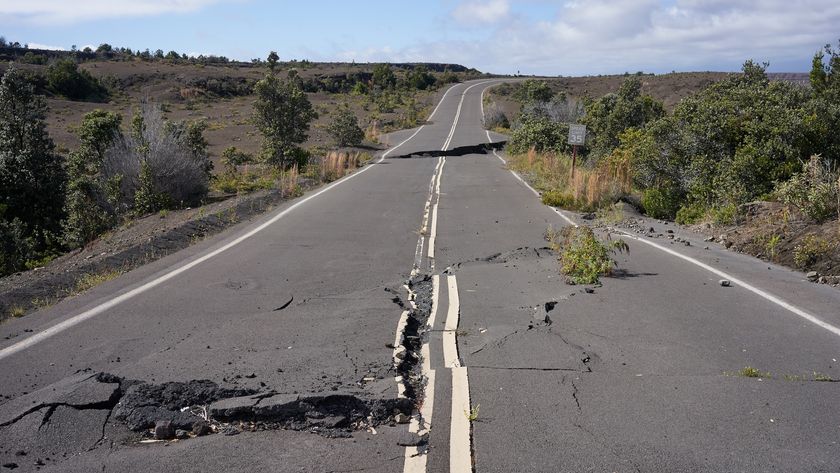The Pentagon
The Pentagon is the largest office building in the world. It is the headquarters of the U.S. Department of Defense and houses the offices of the secretary of defense, the Joint Chiefs of Staff and the secretaries of the military departments.
Too large to be situated in downtown Washington, D.C., the Pentagon lies across the Potomac River, in Arlington County, Va. With more than 6.5 million square feet (604,000 square meters), it boasts three times the floor space of the Empire State Building. More than 3.7 million square feet (344,000 square meters) is used for offices and there are 17.5 miles (28 kilometers) of hallways. About 23,000 civilians and military personnel are employed within the building.

Uniquely conceived
The uniquely shaped structure sprang up quickly and has lasted more than 70 years. In 1941, the United States stood on the brink of war. Adolf Hitler was slowly consuming Europe and had launched an unexpected assault on the Soviet Union. As a result, the U.S. War Department expanded to monitor events. The unwieldy department spanned 17 buildings as the summer drew to a close, making communications a challenge. A new War Department Building had recently been completed, but it was still too small, and it ultimately became home to the Department of State.
In a congressional hearing on July 17, 1941, a Virginia representative indicated the need to solve the growing problem. A decision was made to draw up plans for a new building that night; they were completed by the following Monday.
An asymmetrical plot was chosen on the Arlington Farm, and an irregular five-sided building was planned to fit the space. After vehement discussion, the location was moved to no longer block the view from the Arlington National Cemetery of Washington, D.C. A regular (all-sides-equal) pentagonal shape was adopted, giving rise to the building's name.
Shaped like no other
Initially conceived of by necessity, the decision to maintain the five sides was retained despite opposition to the unusual design. The pentagonal shape provides surprisingly smoother foot traffic, easier distribution of utilities in the enormous structure, and better spacing that had previously been anticipated.
The original plan called for three floors, but a fourth was added. While construction was under way, Pearl Harbor was attacked, and a fifth floor was added. The completed structure called for five concentric rings, connected by corridors to simply movement patterns. The rings are separated by interior courts, which increase the number of windows and allow natural light.
Construction began on Sept. 11, 1941, and the first two sections were completed within six months, allowing personnel to begin moving in. The building was finished on Jan. 15, 1943, a year and a half after the idea was put into motion.
A national tragedy
Exactly 60 years after construction began, eyes turned to New York City on the morning of Sept. 11, 2001, when two airplanes crashed into the north and south towers of the World Trade Center. Forty minutes after the devastating blow to the second tower, and ten minutes before its collapse, American Airlines Flight 77, under control of armed terrorists, smashed into the Pentagon at 530 miles an hour. Scheduled to leave Washington, D.C., and land in Los Angeles, Calif., the plane carried thousands of gallons of jet fuel.
Ripping a 90-foot hole in the building, the plane traveled 310 feet through the three outer rings. Jet fuel spewed everywhere, and gasoline and smoke spread rapidly through the air, with fire close behind. The 58 passengers and six crew members, along with the five hijackers, were killed instantly; inside the Pentagon, 125 civilian and military personnel perished.

As tragic as the events were, they could have been worse. After the Oklahoma City bombing in 1994, the Pentagon began safety renovations designed to minimize explosive damage. Only one wing was considered completed — and it was the wing that took most of the impact. Refitted with sprinklers and reconstructed with steel reinforcement, the spider-web support structure meant the impacted section didn't collapse for nearly half an hour, giving time for many people to escape. The blast-resistant windows, newly built exits and automatic fire doors also are credited for saving lives.
It took nearly a year for employees whose offices were directly damaged to be able to move back in, but the Pentagon itself was open the next day.
Pentagon Memorial
A Pentagon Memorial was created to honor the victims of the terrorist attack. The names of the 184 people who died in the Pentagon and aboard American Airlines Flight 77 are inscribed on stainless steel benches. [Remembering the Fallen: Memorials Gallery]
The memorial is situated along the flight path of the jet on the Pentagon's west side. It is open 24 hours a day.
More facts about the Pentagon:
- Total Land Area: 583 acres (236 hectares)
- Area covered by Pentagon building: 29 acres (12 hectares)
- Area of center courtyard: 5 acres (2 hectares)
- Parking space: 67 acres (27 hectares)
- Parking capacity: 8,770 vehicles
- Length of each outer wall: 921 feet (281 meters)
- Height: 77 feet 3.5 inches (23.5 meters)
- Rest rooms: 284
- Drinking fountains: 691
- Windows: 7,754
— Nola Taylor Redd, LiveScience Contributor
Related:
Sign up for the Live Science daily newsletter now
Get the world’s most fascinating discoveries delivered straight to your inbox.













